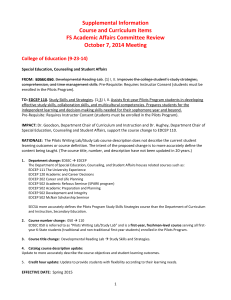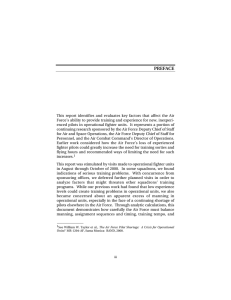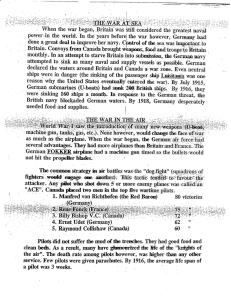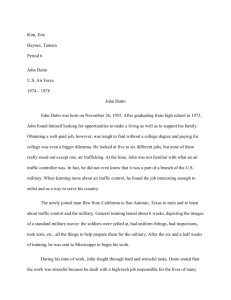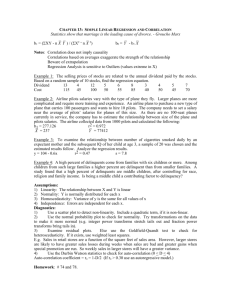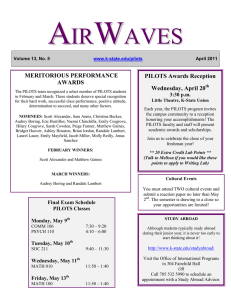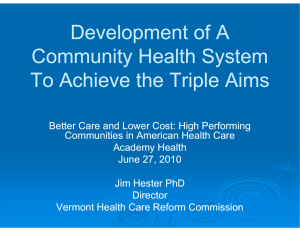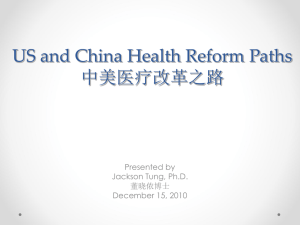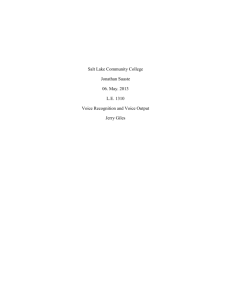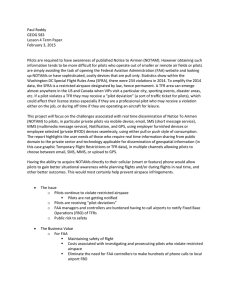Paul Ginsburg's Presentation
advertisement
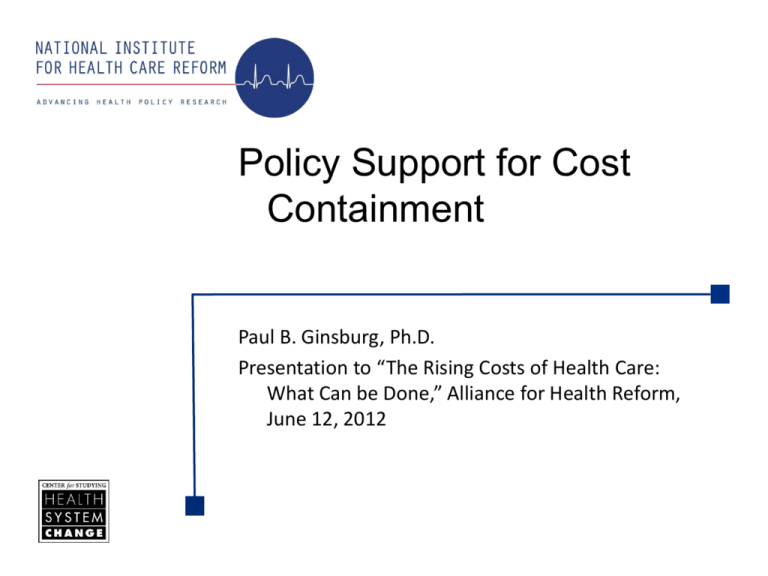
Policy Support for Cost Containment Paul B. Ginsburg, Ph.D. Presentation to “The Rising Costs of Health Care: What Can be Done,” Alliance for Health Reform, June 12, 2012 Urgency for Cost Containment At 18 percent of GDP, trend of GDP+2 highly challenging Federal and state fiscal challenges – Revenue growth roughly in line with GDP – Expanding fiscal risk for governments as private coverage less affordable Rising drain from cash compensation increases Vision of Delivery System Reform Providers taking responsibility for populations Better coordination across care settings and providers More effective management of chronic disease by both providers and patients Greater role for primary care Support from both provider and payer leadership Provider Payment Reform Key payment tools – – – – Global payment (including ACOs) Episode bundles Primary care medical homes Sharing savings: at least for transition Key to pursuing the vision – Motivate providers – Support providers Importance of coordinating payers Role of Medicare and Medicaid Large enough to engage providers Inspire/engage private payers – Credibility with providers – Pioneer ACO contracting with private payers – Essence of Comprehensive Primary Care Initiative Piloting Provider Payment Reforms (1) Current pilots differ from past demonstrations – Approaches from ACA and CMMI – Much larger scale Importance of current pilots – Refine approaches to payment – Engage provider leaders – Point direction for future payment to provider community Piloting Provider Payment Reforms (2) Constraints of engaging volunteers – Need to peg rates to provider-specific spending Alternative is “adverse selection” – Limits upside for providers – Limits on savings that can be achieved by payer – Not viable for the long term What does Round 2 contract look like? – Avoid pilots for better-developed approaches Needed for bundling post-acute care? – Not an issue with medical home pilots Transition from Pilots to Policy Successful pilots cannot remain as pilots Providers will be divided over pace of transition Steps to ease transition – Advance notice – Blended payment (shared savings) Private payers cannot pursue “policy” – Provider interest in parallel methods – Option of policy to require uniform methods Engaging Patients Striking contrast between private and public payers – Private: cost sharing incentives to choose higher-value providers Opportunity to shift provider mix Add to provider incentives Reformed payments or similar calculations – Medicare: no patient financial engagement Additional barrier: supplemental coverage Concern about political risks from lack of engagement Market Concentration Extensive debate around ACO shared savings concerning concentration Forces pushing consolidation much broader – System of future frightening to small hospitals and physician practices Although IPAs in CA and MA show a model for practices – Closer alignment of providers important for integration Challenge of passing gains in efficiency to private purchasers and consumers Expanding Market Approaches Narrow network plans and tiered designs – Tiered designs dependent on “pro-competitive” legislation Additional pressure on premiums pushing these approaches – Weaker economy – Anticipation of “Cadillac” tax – Fixed contribution design of tax credits under ACA Success of market approaches will determine whether direct regulation pursued Additional Approaches to Costs Payment reform the most promising approach – Consistent with shared vision – Well-defined path to success But other approaches have potential as well – Avoid putting all bets on single strategy – Most strategies complementary – Tax treatment of health insurance most directly related Outcomes research Health improvement
